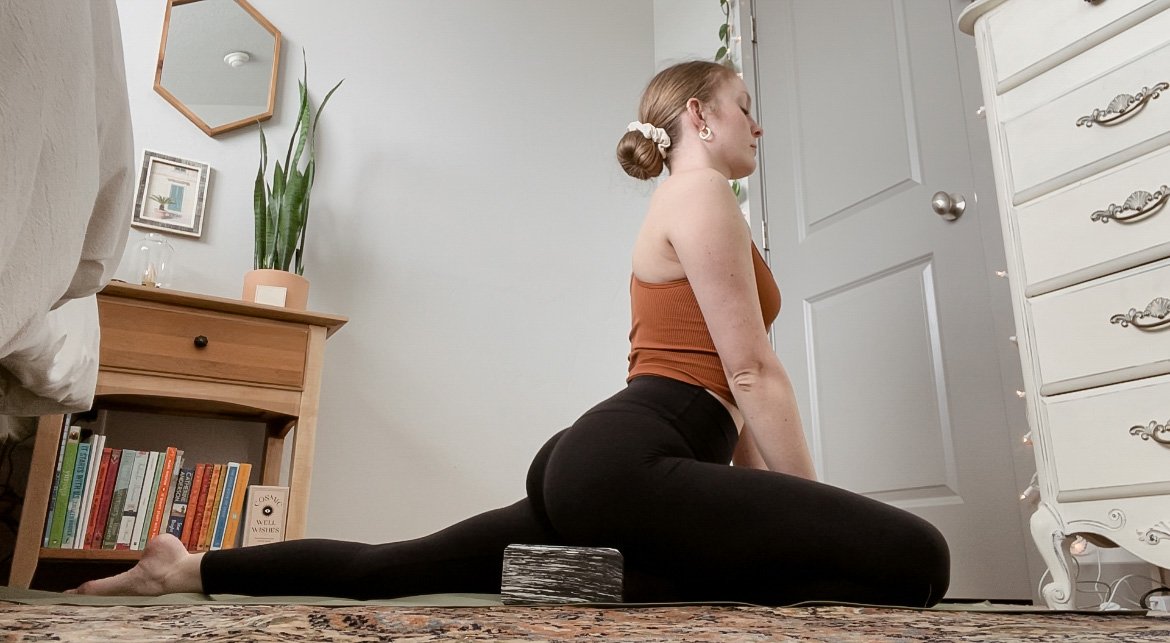Why Yoga Props Are Amazing
Unfortunately, the use of props in yoga often carries a negative stigma. The thought being that one might only need props if they aren’t able to get into the ‘full’ expression of a posture. I’d like to say that I think this idea is *HIGHLY* bogus! And here’s why: we all have different skeletons and variations in muscular structure. The length of certain bones, the proportion of bones to other bones, the angle of joints, injuries, muscular build, the list goes on. Yoga can and should be accessible to every type of body, and with props it can be!
For example, my right hip is higher than my left, and I reach bone-on-bone compression during hip flexion (bringing knee to chest) sooner than on my left side. So for many poses I use blocks, other props, or knowledge of my body to modify the posture to make it more accessible to me. Below you can see me in pigeon pose with my left leg in front vs my right, and how I use a block to avoid bone-on-bone compression on my right side because it is essentially bringing the floor closer to my ischium, sits bone.
Left Leg In Front
Right Leg In Front (you can see there is more space between my sits bone and the floor here)
Block Under The Right Sits Bone (adds support so there is less compression on my hip).
Props can also be used to find deeper sensation in a posture, see the example below of me in puppy pose.
No Blocks
A Block Under Each Elbow
Getting to know YOUR body is the best thing you can do for your practice. Using props can really help elevate your practice and cause less injury. If you’re using props for muscle tightness, over time your body will likely no longer need props and it can just be a way of going deeper into poses over time without putting too much stress on your tissues and potentially causing injury. If there’s a pose that you avoid because of pain or just being unable to get into the shape, I would highly recommend using props to adapt the pose to fit your body instead of trying to fit your body to the pose.





